Your cart is currently empty!
Month: July 2024
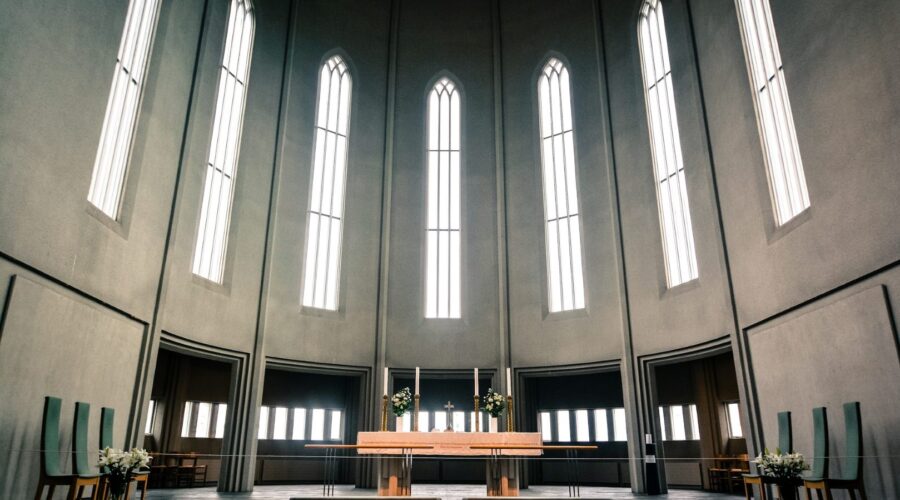
St. Rose of Lima: The First Saint of the Americas
Introduction
St. Rose of Lima is a prominent figure in the history of the Catholic Church. She was the first saint of the Americas and is known for her piety, charity, and miraculous abilities. Her story is an inspiration to many and continues to be celebrated today.
Early Life
Rose was born in Lima, Peru, on April 20, 1586. Her parents, Gaspar Flores and Maria de Oliva, were devout Catholics. Rose was baptized at the age of three and received her First Communion at the age of five. Her early life was marked by a deep love for God and a desire to serve others.
Devotion to the Blessed Sacrament
Rose had a special devotion to the Blessed Sacrament. She would spend hours in prayer before the tabernacle and often received Holy Communion. She also had a great love for the Eucharist and would often distribute it to the poor and sick.
Visions and Miracles
Rose was known for her visions and miracles. She is said to have received visions of the Virgin Mary, Jesus Christ, and the saints. She also performed many miracles, including healing the sick, raising the dead, and controlling the forces of nature.
The Miracle of the Roses
One of the most famous miracles attributed to Rose is the Miracle of the Roses. According to legend, Rose was arrested by Spanish authorities for her religious practices. While in prison, she asked for some roses to be brought to her. The authorities refused, as it was winter and there were no roses blooming. Miraculously, a basket of fresh roses appeared in Rose’s cell, convincing the authorities to release her.
Founding of the Dominican Order in Peru
In 1606, Rose founded the Dominican Order in Peru. She was the first woman to establish a religious order in the Americas. The order was dedicated to the care of the poor and sick, and it quickly spread throughout the region.
Death and Canonization
Rose died on August 24, 1617, at the age of 31. She was canonized by Pope Clement X in 1671. Her feast day is celebrated on August 23.
Legacy
St. Rose of Lima is a beloved saint in the Americas. She is known for her humility, charity, and love of God. Her story is an inspiration to many and continues to be celebrated today.
Shrines and Relics
There are several shrines dedicated to St. Rose of Lima in the Americas. The most famous is the Basilica of San Pedro, located in Lima, Peru. The basilica houses Rose’s relics and is a popular pilgrimage site.
Feast Day Celebrations
St. Rose of Lima’s feast day is celebrated on August 23 with special masses, processions, and other festivities. In Peru, the feast day is a national holiday.
Conclusion
St. Rose of Lima is a powerful example of faith, charity, and devotion to Christ. Her life is a reminder of the power of God’s love and the importance of serving others.
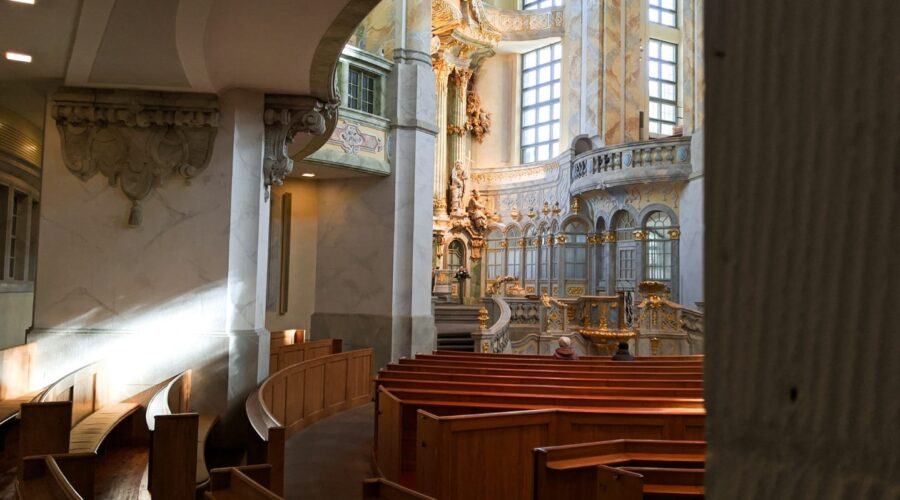
The Church of Jesus Christ of Latter-day Saints: A Comprehensive Guide
Introduction
The Church of Jesus Christ of Latter-day Saints, also known as the LDS Church or Mormon Church, is a Christian denomination founded in the United States in the early 19th century. With over 16 million members worldwide, it is one of the world’s largest and most recognizable religious organizations.
This comprehensive guide provides an in-depth look at the history, beliefs, practices, and controversies surrounding the LDS Church. Whether you are a curious outsider, a potential convert, or a lifelong member, this guide will shed light on the multifaceted and fascinating world of Mormonism.
History
Early Years (1820-1844)
The LDS Church was founded by Joseph Smith Jr. in 1830 in Fayette, New York. Smith claimed to have received revelations from God that led him to translate the Book of Mormon, a sacred text that Mormons believe to be a companion to the Bible.
The church quickly grew, but faced significant persecution and opposition. Smith and his followers were forced to move several times, eventually settling in Nauvoo, Illinois, where they established a thriving community.
Persecution and Martyrdom (1844-1846)
In 1844, Smith was killed by a mob in Carthage, Illinois. His death sparked a succession crisis and led to the eventual departure of the majority of Mormons from Nauvoo.
Exodus to the West (1846-1869)
Under the leadership of Brigham Young, the Mormons undertook a massive exodus westward, crossing the Great Plains and settling in the Salt Lake Valley in Utah. They established a new colony known as Deseret, which eventually became the state of Utah.
The Mormons faced significant challenges in the West, including conflicts with Native American tribes and the U.S. government. However, they also achieved significant economic and political success.
Beliefs
Core Beliefs
- The Godhead: Mormons believe in a godhead consisting of God the Father, Jesus Christ, and the Holy Ghost.
- Divine Nature of Jesus Christ: Mormons believe that Jesus Christ is the Son of God and the Savior of mankind.
- Resurrection and Eternal Life: Mormons believe that all people will be resurrected after death and that those who have lived righteously will inherit eternal life.
- The Book of Mormon: Mormons revere the Book of Mormon as a sacred text that contains additional revelations from God.
- Continuing Revelation: Mormons believe that God continues to reveal his will through modern prophets and apostles.
Distinctive Doctrines
- Eternal Marriage: Mormons believe that marriage is ordained of God and that it can continue beyond death.
- Baptism for the Dead: Mormons believe that those who have died without the opportunity to be baptized can be baptized by proxy.
- Temple Worship: Mormons build and maintain temples where they perform sacred ordinances, such as marriage and baptism for the dead.
Practices
Worship Services
LDS Church members attend weekly worship services known as sacrament meetings. These meetings include prayers, hymns, and talks by church leaders.
Members also attend the temple regularly to perform sacred ordinances. Temple ordinances are performed in a sacred setting and are considered to be essential for salvation.
Missionary Work
Missionary work is a central part of LDS Church culture. Young men and women volunteer to serve two-year missions in various parts of the world, teaching their beliefs and inviting others to be baptized.
Education
The LDS Church places a high value on education. It operates over 800 schools and universities worldwide, including Brigham Young University and the University of Utah.
Controversies
The LDS Church has faced numerous controversies throughout its history, including:
Polygamy
Early LDS Church leaders practiced polygamy, or the marriage of one man to multiple women. This practice was abandoned in 1890 under pressure from the U.S. government.
Race and Priesthood
Until 1978, the LDS Church restricted the priesthood, its highest office, to men of European descent. This policy was rescinded in 1978, but it remains a controversial topic for some members.
LGBTQ+ Rights
The LDS Church’s stance on LGBTQ+ issues has been evolving in recent years. While the church affirms that homosexual behavior is a sin, it has softened its stance on same-sex marriage and other LGBTQ+ issues.
Conclusion
The Church of Jesus Christ of Latter-day Saints is a complex and multifaceted religious organization with a rich history, unique beliefs, and a global reach. Its members are known for their strong sense of community, commitment to education, and missionary work.
While the church has faced controversies and challenges over the years, it continues to thrive and grow, attracting millions of members worldwide. Understanding the LDS Church is essential to gaining a broader perspective on the diverse landscape of Christian denominations.
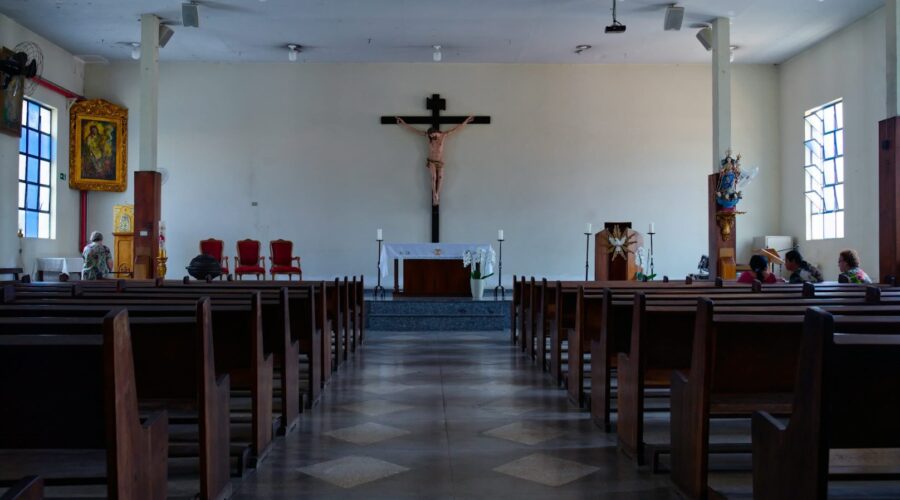
Discover the History, Significance, and Impact of the Holy Name of Jesus Church
Introduction
The Holy Name of Jesus Church, a revered Catholic parish in Chicago, Illinois, holds a rich history, profound religious significance, and continues to play a vital role in the city’s spiritual and cultural landscape.
History of the Parish
Humble Beginnings
The origins of the Holy Name of Jesus Church trace back to the late 19th century. In 1869, a small group of German immigrants founded a parish in the Avondale neighborhood of Chicago, named after the patron saint of the German people, St. Boniface.
Expansion and Growth
As the congregation grew, the need for a larger church became evident. In 1909, the parish purchased land on Damen Avenue and dedicated the Holy Name of Jesus Church in 1910. The church, designed in the Gothic Revival style, featured intricate stained glass windows and a magnificent vaulted ceiling.
Architectural Splendor
Gothic Revival Masterpiece
The Holy Name of Jesus Church is a prime example of Gothic Revival architecture. Its towering spires and pointed arches evoke the grandeur of medieval cathedrals. The church’s exterior is adorned with intricate carvings and gargoyles, symbolizing the struggle between good and evil.
Interior Sanctuary
Inside the church, visitors are greeted by a breathtaking sanctuary. The massive nave is supported by rows of slender columns, creating an atmosphere of awe and inspiration. The vaulted ceiling is painted with vibrant murals depicting biblical scenes.
Religious Significance
Devotion to the Holy Name
As its name suggests, the Holy Name of Jesus Church holds a profound reverence for the name of Jesus Christ. The parish’s mission is to promote devotion to Jesus’ name and to bear witness to his love and grace.
Patron Saint
The patron saint of the church is St. Eugene de Mazenod, the founder of the Missionary Oblates of Mary Immaculate. St. Eugene’s unwavering faith in the power of Jesus’ name inspired the parish’s dedication and its commitment to evangelization.
Community Outreach
Social Service Programs
The Holy Name of Jesus Church is deeply committed to serving the wider community. The parish runs a variety of social service programs, including a food pantry, a clothing bank, and a homeless outreach program.
Educational Institutions
The church also operates several educational institutions, including Holy Name of Jesus School and Resurrection High School. These schools provide quality education and spiritual guidance to students from diverse backgrounds.
Cultural Impact
Local Landmark
The Holy Name of Jesus Church is not only a religious center but also a beloved Chicago landmark. Its towering presence and architectural beauty have made it a recognizable icon in the city’s skyline.
Musical Heritage
The church is renowned for its vibrant music program. The Holy Name Cathedral Choir and Orchestra perform a wide repertoire of sacred and classical music, enriching the spiritual experience for congregants and visitors alike.
Visiting the Church
Mass Times and Schedule
The Holy Name of Jesus Church offers daily and weekend Masses, as well as special liturgical services throughout the year. Visit the parish website for the most up-to-date schedule.
Tours and Pilgrimages
Guided tours of the church are available by appointment. Pilgrims and visitors are welcome to explore the church’s historic architecture, admire its artistic treasures, and learn about its spiritual significance.
Conclusion
The Holy Name of Jesus Church is a vibrant and enduring testament to faith, community, and cultural heritage. Its historical roots, architectural splendor, religious significance, and community outreach make it a beloved institution in Chicago. Whether seeking spiritual inspiration, architectural appreciation, or a glimpse into the city’s history, visitors to the Holy Name of Jesus Church will find a place of beauty, grace, and enduring legacy.
Additional Resources
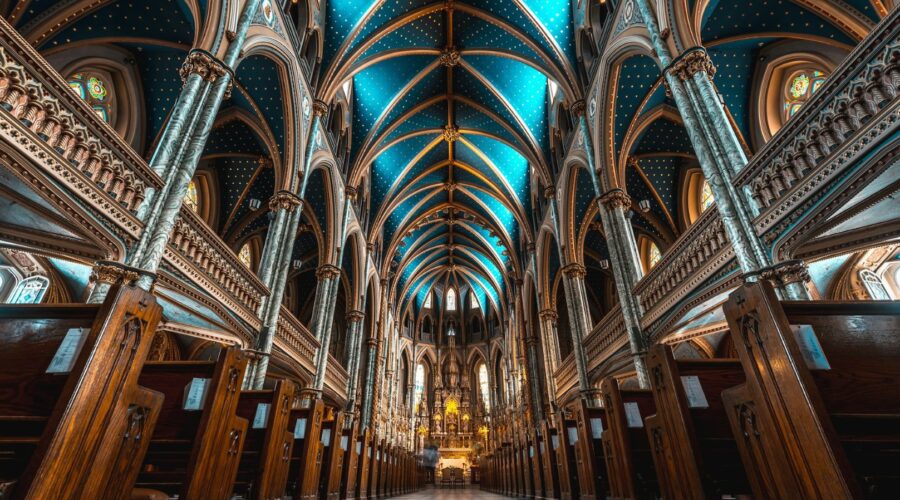
Explore the Enchanting Little Flower Church: Its History, Features, and Significance
Nestled in the heart of Manhattan, New York, the Little Flower Church stands as a magnificent tribute to faith and community. This iconic Roman Catholic parish has a rich history that spans over a century, captivating visitors from all walks of life with its unique architectural features and inspiring spiritual presence.
Historical Background
The Little Flower Church was founded in 1902 to serve the growing Italian immigrant community in New York City. It was named after Saint Thérèse of Lisieux, affectionately known as “the Little Flower of Jesus,” who became a patron saint of the parish.
The church was designed by renowned architect Frederick C. Zobel in the Romanesque Revival style. Its cornerstone was laid in 1903, and the building was completed in 1905.
Architectural Highlights
The Little Flower Church boasts a stunning exterior facade made of Indiana limestone. Its most striking feature is the ornate rose window that adorns the front entrance. The window depicts Saint Thérèse surrounded by angels and lilies, symbolizing her purity and devotion.
Inside the church, visitors are awed by the soaring vaulted ceilings and intricate stained-glass windows. The sanctuary features a beautiful marble altar and a tabernacle that was designed by acclaimed sculptor Karl Bitter.
Community Involvement
Beyond its architectural beauty, the Little Flower Church has played a vital role in the lives of the surrounding community. Throughout its history, the parish has offered a wide range of social services, including:
- Educational programs
- Health clinics
- Soup kitchens
- Immigrant assistance
Spiritual Significance
The Little Flower Church is a place of pilgrimage for many Catholics who seek inspiration from the life of Saint Thérèse of Lisieux. The church’s relics of the saint, which include a piece of her heart, attract visitors from around the world.
The parish community of the Little Flower Church is known for its strong sense of spirituality and its commitment to reaching out to those in need. The church offers regular Masses, sacraments, and prayer services.
Events and Activities
Throughout the year, the Little Flower Church hosts various events and activities, including:
- Novenas to Saint Thérèse
- Pilgrimages to her tomb in France
- Community festivals
- Lectures and workshops on faith and spirituality
Visiting the Little Flower Church
The Little Flower Church is located at 646 66th Street, New York, NY 10065. The church is open to the public daily from 8:00 AM to 6:00 PM.
Visitors are encouraged to call ahead to schedule a guided tour or to inquire about upcoming events.
Additional Information
- Official Website of the Little Flower Church
- Patron Saint of the Little Flower Church: Saint Thérèse of Lisieux
- Architect of the Little Flower Church: Frederick C. Zobel
- Date of Completion: 1905
The Little Flower Church stands as a testament to the power of faith, the beauty of architecture, and the resilience of community. Whether you are a pilgrim, a history buff, or simply seeking a place of spiritual renewal, this iconic landmark is sure to inspire and amaze.
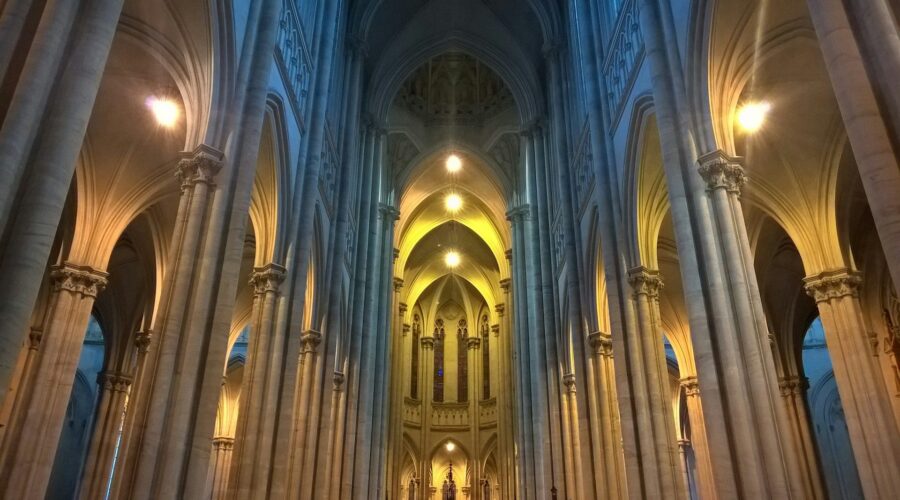
Discover the Rich Tapestry of the Roman Catholic Religion
Introducing the Roman Catholic Church
The Roman Catholic Church is the largest Christian denomination with over 1.3 billion followers worldwide. Rooted in the teachings of Jesus Christ and the apostles, the Catholic Church has a rich and complex history spanning centuries.
Core Beliefs
- Monotheism: Belief in one God who is Trinity (Father, Son, Holy Spirit).
- Incarnation: Belief that God became human in the person of Jesus Christ.
- Resurrection: Belief that Jesus Christ rose from the dead.
- Sacraments: Seven sacred rituals that convey God’s grace, including baptism, confirmation, and Eucharist.
- Biblical Canon: Recognition of the Bible as divine Scripture, consisting of the Old and New Testaments.
Historical Development
Early Origins
The Catholic Church traces its roots to the apostles of Jesus Christ. Peter, the first pope, established the church in Rome. The church grew and spread throughout Europe and the Middle East under the leadership of early bishops and theologians.
Expansion and Empire
From the 4th century onwards, the Catholic Church became closely aligned with the Roman Empire. Emperor Constantine legalized Christianity, and the church played a significant role in the administration and culture of the empire.
Middle Ages
During the Middle Ages, the Catholic Church reached its peak of influence and power. It established monasteries, universities, and cathedrals, and played a central role in society. However, this period also witnessed internal divisions and conflicts, such as the Great Schism.
Reformation and Counter-Reformation
In the 16th century, the Protestant Reformation challenged the authority of the Catholic Church. In response, the church initiated the Counter-Reformation, a movement to reaffirm Catholic beliefs and practices.
Структура и Организация
The Pope
The Pope is the Bishop of Rome and the head of the Catholic Church. He is considered the successor of Peter and has the authority to define doctrine and promulgate laws.
Bishops and Clergy
Bishops oversee dioceses and guide their priests and deacons. Priests are ordained ministers who lead local communities, administer sacraments, and teach the faith. Deacons assist priests in liturgical and pastoral roles.
Lay Ministry
Laity are non-clerical members of the church who play an active role in its mission. They serve in various ministries, such as teaching, counseling, and social outreach.
Theology and Worship
Theology
Catholic theology is based on Scripture, Tradition, and the teachings of the Church Fathers. It emphasizes the importance of faith, grace, and the sacraments in the salvation of souls.
Worship
The Catholic Church celebrates a rich liturgical calendar, including the Mass, sacraments, and devotions. Worship is centered on the Eucharist, which is seen as the source and summit of the Catholic faith.
Mission and Social Justice
The Catholic Church has a strong commitment to social justice and the common good. It operates numerous charitable organizations and actively advocates for the poor, marginalized, and oppressed.
Challenges and Controversies
Throughout its history, the Catholic Church has faced challenges and controversies. These include issues of sexual abuse, clericalism, and the role of women within the church.
Conclusion
The Roman Catholic Church is a complex and multifaceted institution with a rich history, theology, and social impact. It continues to play a significant role in the lives of billions of people worldwide.
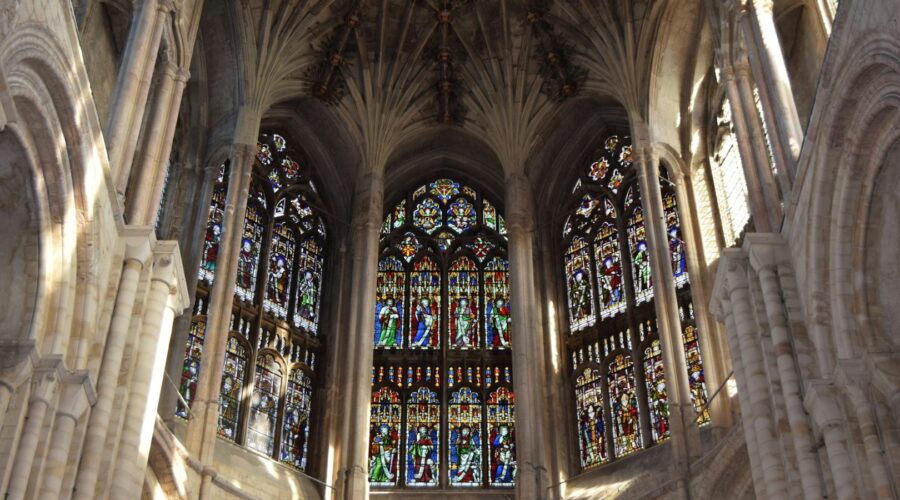
The Blessed Sacrament Catholic Church: A Beacon of Faith and Community
Introduction
The Blessed Sacrament Catholic Church stands as a cornerstone of the Catholic faith, embodying the teachings of Jesus Christ and nurturing a vibrant community of believers. This comprehensive guide delves into the history, beliefs, liturgies, and social outreach of the Blessed Sacrament Catholic Church, providing a comprehensive understanding of its significance to the Catholic Church and the world.
History and Mission
The Blessed Sacrament Catholic Church traces its roots back to the 19th century, established to serve the growing Catholic population in a particular region. Throughout its history, the church has remained steadfast in its mission to:
- Proclaim the Gospel of Jesus Christ
- Foster a welcoming and inclusive community
- Provide spiritual growth opportunities
- Serve the marginalized and those in need
Beliefs and Teachings
The Blessed Sacrament Catholic Church adheres to the Nicene Creed, affirming core Christian beliefs such as:
- The Trinity: God the Father, God the Son (Jesus Christ), and God the Holy Spirit
- The Incarnation: The belief that Jesus Christ is both fully human and fully divine
- The Resurrection: The belief that Jesus Christ rose from the dead
- The Sacraments: Seven sacred rituals administered by the Church, including Baptism, Eucharist, and Confirmation
Liturgical Practices
The Blessed Sacrament Catholic Church places great importance on liturgical practices, which include:
- Mass: The central act of worship in Catholic tradition, celebrating the Eucharist, a sacrament that symbolizes the body and blood of Jesus Christ.
- Holy Hours: Extended periods of prayer and adoration dedicated to the Blessed Sacrament.
- Penance: The sacrament of reconciliation, where individuals confess their sins and receive absolution.
- Prayer: Individual and communal prayer is encouraged through daily devotions, rosary, and Scripture reading.
Social Outreach and Service
The Blessed Sacrament Catholic Church extends its mission beyond its sanctuary walls, actively engaging in social outreach and service. This includes:
- Food Pantry: Providing nourishment to those facing food insecurity in the community.
- Soup Kitchen: Offering hot meals to the homeless and hungry.
- Community Resource Center: A hub for social services, including job counseling, housing assistance, and healthcare referrals.
- Prison Ministry: Providing spiritual guidance and support to incarcerated individuals.
Community and Belonging
The Blessed Sacrament Catholic Church is more than a physical structure; it is a thriving community of believers. The church fosters a sense of belonging through:
- Parish Groups: Small groups that gather for fellowship, prayer, and service.
- Youth Programs: Engaging youth in faith formation, outreach, and leadership development.
- Senior Ministry: Providing support and companionship to older adults.
- Cultural Events: Celebrating the diverse cultures represented within the parish.
The Blessed Sacrament
The Blessed Sacrament is the central focus of Catholic devotion and refers to the consecrated bread (known as the Host) and wine used in the Eucharist. Believed to be the actual body and blood of Jesus Christ, the Blessed Sacrament is:
- Reserved in the Tabernacle: A special container located in the sanctuary.
- Adored in Perpetual Adoration: Some churches offer 24-hour adoration, allowing individuals to spend time in prayer before the Blessed Sacrament.
- Celebrated in the Eucharist: The sacrament of Holy Communion, where the consecrated bread and wine are received by the faithful.
Conclusion
The Blessed Sacrament Catholic Church serves as a sanctuary of faith, a beacon of hope, and a catalyst for social change. Rooted in the teachings of Jesus Christ, the church fosters a vibrant community of believers united by their shared beliefs, liturgical practices, and commitment to serving others. The Blessed Sacrament, as the centerpiece of Catholic devotion, invites individuals into a deeper relationship with God and inspires them to live out the Gospel values of love, compassion, and service.
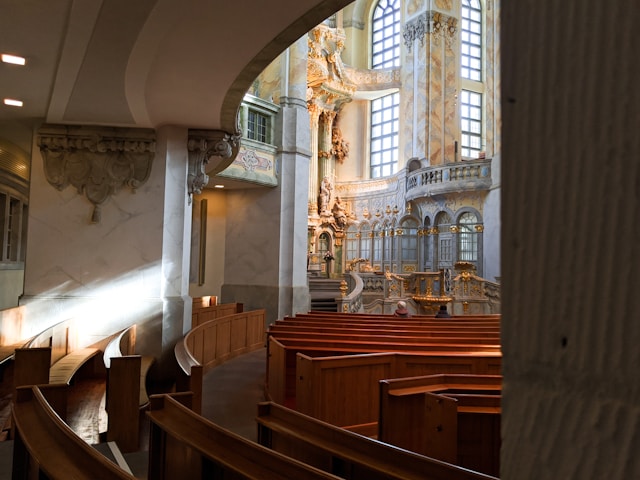
St. Anthony’s Church: A Historical Tapestry of Faith and Spirituality
Introduction
Nestled in the heart of the bustling city, St. Anthony’s Church stands as a beacon of faith and history. This iconic structure has witnessed countless moments of devotion, contemplation, and community over the centuries. Its intricate architecture and rich heritage captivate both believers and visitors alike.
Historical Significance
Foundation and Early Years
St. Anthony’s Church traces its origins back to the 13th century. According to legend, the church was founded by St. Anthony of Padua, a renowned Franciscan friar. The original building was a modest chapel, but it quickly gained prominence as a center of spiritual and communal life.
Expansion and Renovations
Over the centuries, the church underwent several renovations and expansions. In the 15th century, a spacious nave and aisles were added, creating a more imposing structure. Further additions were made in the 19th century, including a grand organ and intricate stained glass windows.
Role in the Community
St. Anthony’s Church has played a pivotal role in the community throughout its existence. It served as a place of worship, education, and social gathering. The church provided shelter and support to the poor and marginalized, and its leaders were actively involved in advocating for justice and equality.
Architectural Splendor
Gothic Design
St. Anthony’s Church is an exquisite example of Gothic architecture. Its soaring spires, pointed arches, and intricate stone carvings create an awe-inspiring atmosphere. The exterior features flying buttresses, which support the weight of the roof and allow for large windows that flood the interior with natural light.
Stained Glass Windows
The stained glass windows of St. Anthony’s Church are true works of art. They depict biblical scenes, saints, and symbolic motifs. The windows create a vibrant and colorful tapestry, adding to the beauty and spiritual significance of the space.
Statues and Altars
The church is adorned with numerous statues and altars, each with its own unique history and significance. The main altar, dedicated to St. Anthony, is a masterpiece of intricate carvings and gilded artwork. Other notable statues include those of the Virgin Mary, Jesus Christ, and various saints.
Religious Significance
Pilgrimage Site
St. Anthony’s Church is a popular pilgrimage site for Catholics from around the world. Devotees come to pray at the relics of St. Anthony, which are housed in the church, and to seek his intercession and blessings.
Feast Day Celebrations
The feast day of St. Anthony is celebrated annually with great devotion. The church hosts a special Mass, processions, and other festivities, bringing together the community in a spirit of joy and unity.
Sacramental Life
St. Anthony’s Church offers a wide range of sacraments, including baptisms, confirmations, marriages, and funerals. These sacraments provide spiritual sustenance and guidance to the faithful, marking important milestones in their lives.
Conclusion
St. Anthony’s Church is a living testament to the power of faith, spirituality, and architectural artistry. Its rich history, stunning architecture, and ongoing religious significance continue to inspire and uplift countless individuals. As a beloved landmark, it remains a cherished space where people of all backgrounds gather to seek solace, celebrate community, and connect with the divine.
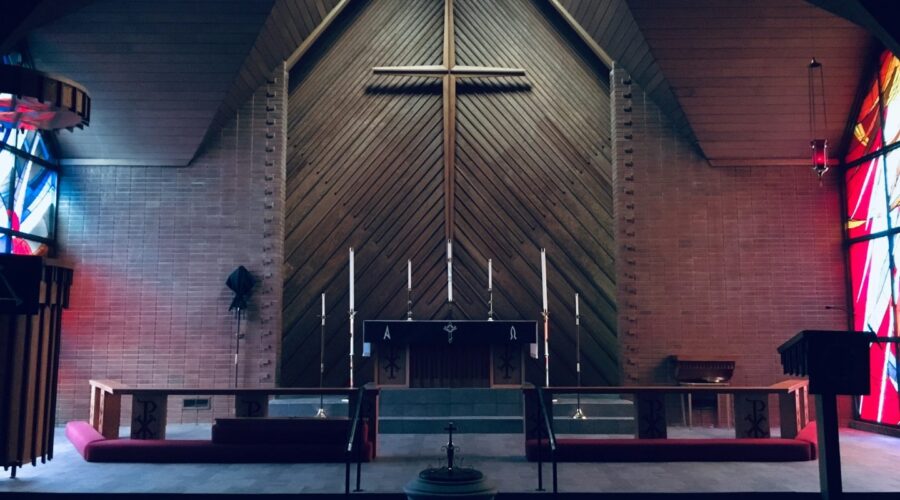
Unveiling the Secrets of Church Renovations: A Comprehensive Guide
Introduction
Embarking on a church renovation project can be an awe-inspiring yet daunting task. To navigate this complex endeavor seamlessly, it’s crucial to approach it with meticulous planning and a thorough understanding of the intricate elements involved. In this comprehensive guide, we delve into every aspect of church renovations, empowering you with the knowledge and insights needed to transform your sacred space.
Determining the Need for Renovation
Before embarking on a renovation journey, it’s essential to carefully assess the condition of your church and identify the underlying reasons prompting the need for change. Some common indicators include:
Deterioration and Age:
Over time, buildings naturally deteriorate due to wear and tear. Older churches may require extensive repairs or renovations to maintain their structural integrity, functionality, and aesthetic appeal.
Functionality Issues:
As congregations evolve and needs change, church facilities may become outdated or inadequate. Renovations can address space limitations, improve accessibility, and enhance overall functionality.
Energy Efficiency:
Outdated HVAC systems, poor insulation, and inefficient lighting contribute to high energy consumption. Renovations can incorporate eco-friendly measures to reduce operating costs and create a sustainable environment.
Accessibility Enhancements:
Ensuring equal access for all members is paramount. Renovations can include ramps, elevators, accessible restrooms, and assistive listening devices to promote inclusivity.
Planning and Funding the Renovation
Once the need for renovation is established, meticulous planning and fundraising become crucial.
Forming a Renovation Committee:
Assemble a team of dedicated individuals responsible for overseeing the renovation project. This committee should represent diverse perspectives and expertise.
Developing a Comprehensive Plan:
Create a detailed plan outlining the renovation goals, scope of work, timeline, and budget. This plan serves as the roadmap for the entire project.
Fundraising Strategies:
Secure funding for the renovation through various channels such as capital campaigns, grants, and individual donations. Transparent communication and engagement with the congregation are key to successful fundraising.
Selecting the Right Design and Construction Team
Choosing the right design and construction team is essential for the success of your renovation project.
Architect and Engineer Selection:
Seek professionals with experience in church design and construction. Look for firms that understand the unique requirements and sensitivities of sacred spaces.
Contractor Selection:
Evaluate potential contractors based on their reputation, financial stability, and experience. Ensure they adhere to industry best practices and ethical guidelines.
Managing the Renovation Process
The renovation process involves multiple stages, each requiring careful coordination and oversight.
Demolition and Construction:
Demolish existing structures and construct new ones as per the design plan. Ensure adherence to building codes and safety regulations.
Finishes and Fixtures:
Select and install finishes, fixtures, and furnishings that align with the aesthetic and functional goals of the renovation. Consider durability, maintenance, and accessibility.
Theological and Liturgical Considerations:
For sacred spaces, address theological and liturgical considerations throughout the renovation process. Consult with church leaders and experts to ensure alignment with the congregation’s beliefs and worship practices.
Communicating with the Congregation
Maintaining open and transparent communication with the congregation is vital throughout the renovation journey.
Regular Updates:
Provide regular updates on the progress, challenges, and successes of the renovation. Use multiple communication channels (e.g., newsletters, social media, website) to share information.
Involving the Congregation:
Create opportunities for congregation members to participate in the renovation process. Seek their input on design elements, volunteer for tasks, and celebrate milestones.
Addressing Concerns:
Anticipate and address concerns raised by the congregation. Be transparent and responsive to feedback, addressing concerns promptly and respectfully.
Post-Renovation Care and Maintenance
Once the renovation is complete, proper care and maintenance are crucial to ensure its longevity and functionality.
Establish a Maintenance Plan:
Develop a comprehensive maintenance plan outlining regular cleaning, inspections, and repairs. Assign responsibilities for maintenance tasks to designated individuals or committees.
Monitor and Evaluate:
Regularly monitor the condition of the renovated space and evaluate its effectiveness in meeting the congregation’s needs. Make adjustments as necessary to ensure ongoing satisfaction.
Conclusion
Church renovations are transformative endeavors that present opportunities for renewal, growth, and enhanced worship experiences. By carefully considering the need for renovation, planning thoroughly, selecting the right team, managing the process efficiently, communicating effectively, and implementing proper maintenance, you can successfully navigate this complex undertaking and create a sacred space that inspires, unites, and reflects the mission and values of your congregation.
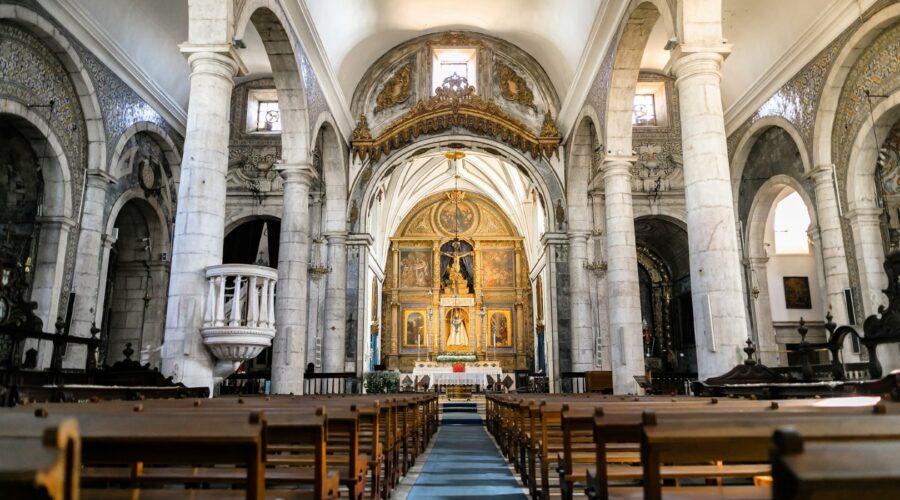
Centenary United Methodist Church: A Century of Faith and Service
Established in 1923, Centenary United Methodist Church has served as a beacon of faith and community in the heart of [City Name] for a century. Over the decades, the church has played a pivotal role in shaping the spiritual, social, and cultural landscape of the region.
A Rich History
Founding and Early Years
In the early 20th century, a group of Methodist families recognized the need for a new church to serve the growing population of [City Name]. In 1923, they founded Centenary Methodist Episcopal Church, named after the Methodist Church’s centenary celebration that year. The first church building was a modest frame structure, but it soon became a hub of religious and community activities.
Growth and Expansion
As the church grew in membership, so did its physical presence. In 1953, a new church building was constructed, featuring a spacious sanctuary, classrooms, and a fellowship hall. This expansion accommodated the growing congregation and allowed for a wider range of ministries.
Centennial Celebration
In 2023, Centenary United Methodist Church celebrated its 100th anniversary with a year-long series of events. These included special worship services, historical exhibitions, and community outreach programs. The celebration culminated in a grand reunion, where former members and friends gathered to reminisce and celebrate the church’s legacy.
Faith and Worship
Traditional and Contemporary Services
Centenary United Methodist Church offers a diverse range of worship services to meet the needs of its congregation. Traditional services, held on Sundays, feature hymns, prayers, and sermons that draw on the Methodist tradition. Contemporary services, also held on Sundays, incorporate modern music and multimedia elements to create a more informal and engaging worship experience.
Small Groups and Bible Studies
Beyond Sunday worship, Centenary offers various small groups and Bible studies that provide opportunities for deeper spiritual growth and community. These groups meet throughout the week and focus on topics such as discipleship, prayer, and social justice.
Community Outreach
Mission and Service
Centenary United Methodist Church has a long history of serving the community through mission and service programs. The church supports local and global organizations that address issues such as hunger, poverty, health care, and environmental protection.
Community Partnerships
Centenary actively partners with other churches, non-profit organizations, and government agencies to address community needs. These partnerships include providing meals to the homeless, tutoring students, and volunteering at local hospitals.
Education and Fellowship
Sunday School and Children’s Ministries
Centenary offers age-appropriate Sunday School classes for children of all ages. These classes provide biblical instruction, faith formation, and opportunities for fellowship.
Youth Programs
The church has a vibrant youth program that includes Sunday School classes, youth group activities, and mission trips. These programs aim to nurture the faith of young people and equip them to become leaders in the church and community.
Adult Fellowship and Events
Centenary offers a variety of fellowship groups and events for adults, including a women’s group, men’s group, and senior citizens’ group. These groups provide opportunities for social interaction, spiritual growth, and community service.
Leadership and Governance
Pastor and Staff
Centenary United Methodist Church is led by a pastor and a dedicated staff who oversee the church’s worship, education, outreach, and administrative functions.
Lay Leadership
The church is governed by a lay leadership board that is elected by the congregation. The board works closely with the pastor and staff to set the direction of the church and ensure its financial stability.
Membership and Contact Information
Membership Information
Membership in Centenary United Methodist Church is open to all who profess faith in Jesus Christ and desire to grow in their relationship with God and others.Click here for more information about membership.
Contact Information
- Address: [Church Address]
- Phone: [Phone Number]
- Email: [Email Address]
- Website: [Website URL]
Service Times Day Traditional Service Contemporary Service Sunday 9:00 AM 11:00 AM 
Apostolic: An In-Depth Exploration of the Term’s Meaning and Significance
What is Apostolic?
The term “apostolic” is derived from the Greek word “apostolos,” which means “one who is sent out.” In the Christian context, it primarily refers to those who were directly commissioned by Jesus Christ to spread the gospel and establish the early Church. These individuals are known as the apostles.
The Role of the Apostles
The apostles played a crucial role in the founding and growth of the Christian faith:
- Witnessing to Jesus’ Resurrection:
The apostles were central witnesses to the resurrection of Jesus from the dead. Their testimony played a significant role in establishing the belief in Jesus’ divinity and the Christian hope of salvation.
- Preaching the Gospel:
The apostles were commanded by Jesus to preach the gospel to all nations. They traveled extensively, founding churches and spreading the message of salvation through Jesus Christ.
- Establishing Church Structure:
The apostles were responsible for establishing the structure and organization of the early Church. They ordained elders, deacons, and other leaders, and developed guidelines for church life.
Characteristics of Apostolic Ministry
The apostolic ministry is characterized by several key attributes:
- Direct Commission from Christ:
The apostles were not self-appointed but were personally chosen and commissioned by Jesus. This direct authority gave their teachings and actions unique significance.
- Witness to the Gospel:
The apostles were eyewitnesses to the life, teachings, death, and resurrection of Jesus. Their firsthand accounts provided the foundation for the New Testament and the Christian faith.
- Missionary Focus:
The apostles were primarily focused on spreading the gospel to new areas. They traveled extensively, planting churches and discipling new believers.
- Authority in Teaching:
The apostles possessed authority in matters of faith and practice. Their teachings were regarded as authoritative and binding for the Church.
- Miraculous Gifts:
Many apostles were gifted with miraculous abilities, such as healing the sick, speaking in tongues, and casting out demons. These gifts demonstrated the authenticity of their ministry and the power of the Holy Spirit.
The Successors of the Apostles
The term “apostolic” is also applied to the successors of the original apostles. In various Christian denominations, this includes:
- Catholic Church:
The Catholic Church holds that the pope and bishops are the apostolic successors of Peter and the other apostles, responsible for preserving and transmitting the faith.
- Orthodox Churches:
The Orthodox Churches also recognize the apostolic succession of their bishops, tracing their authority back to the original apostles through unbroken lines of ordination.
- Episcopal Church:
The Episcopal Church ordains its bishops through a process known as apostolic succession, believing that it has inherited the apostolic authority of the early Church.
Apostolic Principles for Today
While the apostolic age has passed, the principles that guided the apostles remain relevant for Christians today:
- Direct Relationship with Christ:
The apostles’ authority was rooted in their direct relationship with Christ. Believers today are encouraged to develop a personal relationship with God through prayer and the study of Scripture.
- Missionary Mindset:
The apostles were driven by a missionary passion to spread the gospel. Christians are called to share their faith with others and support missions work.
- Biblical Authority:
The apostles taught according to the authority of Scripture. The Bible remains the authoritative guide for Christian faith and practice.
- Spiritual Gifts:
The apostles possessed various spiritual gifts. Believers today can be equipped with spiritual gifts that empower them for ministry and service.
Conclusion
The term “apostolic” carries great significance in Christian history and theology. It refers to the original apostles who were commissioned by Jesus to spread the gospel and establish the Church. The principles that guided their ministry remain relevant for believers today, emphasizing the importance of a direct relationship with Christ, a missionary mindset, biblical authority, and the use of spiritual gifts for the edification of the Church and the proclamation of the gospel.
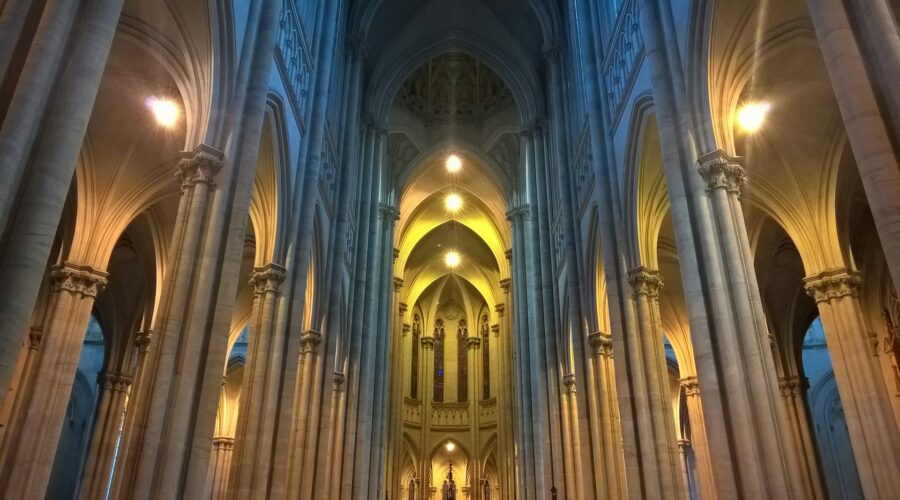
Riverside Community Church: A Spiritual Oasis in the Heart of Nature
Embracing the serenity of flowing waters and the warmth of a welcoming community, Riverside Community Church stands as a beacon of spiritual growth and connection. Nestled alongside the picturesque banks of the river, this sacred space invites you to embark on a profound journey of faith, fellowship, and personal transformation.
Our Mission: Nurturing Spiritual Growth and Community
At Riverside Community Church, we believe that spiritual growth is a collaborative endeavor, nurtured through meaningful connections and unwavering support. Our mission is to:
- Foster a vibrant and inclusive community where all are welcome and valued.
- Provide insightful and inspiring teachings that deepen our understanding of God’s word.
- Create opportunities for spiritual growth, personal reflection, and service to others.
- Celebrate diversity and foster unity, recognizing that each member contributes to the richness of our faith journey.
Sunday Worship Services: A Time for Connection and Inspiration
Every Sunday, we gather in the warm and inviting sanctuary for our worship services, which are designed to uplift, inspire, and connect us with the divine. Our services typically include:
- Welcome and announcements: Gathering as a community to share updates and connect.
- Prayer: Opening our hearts to God in gratitude, petition, and praise.
- Singing: Raising our voices in harmony to express our joy, faith, and devotion.
- Sermon: A thought-provoking and relatable message based on Scripture, designed to deepen our understanding of God’s word.
- Communion: A sacred ritual of remembrance and unity, symbolizing our shared faith in Christ.
Life Groups: Small Groups, Big Impact
Beyond our Sunday worship services, our Life Groups provide an intimate and supportive environment for spiritual growth and fellowship. These small groups meet regularly to:
- Study the Bible: Engage in discussions, ask questions, and deepen our understanding of God’s word.
- Pray together: Lift one another up in prayer, seeking guidance, support, and healing.
- Serve the community: Identify needs and work together to make a positive impact on our surroundings.
- Build relationships: Foster deep bonds, encourage one another, and celebrate life’s journey together.
Youth and Children’s Programs: Nurturing Young Minds and Hearts
Our vibrant youth and children’s programs are designed to engage and inspire our young ones, helping them grow in their faith and discover their unique gifts. These programs include:
Youth Group
- Middle School and High School: Tailored activities, discussions, and outings to nurture their spiritual development and prepare them for adulthood.
Children’s Ministry
- Nursery: A safe and nurturing environment for infants and toddlers, with loving caregivers.
- Sunday School: Age-appropriate Bible lessons, activities, and songs to foster a love for God and His word.
- Vacation Bible School: An annual summer program filled with fun, games, music, and lessons.
Outreach and Service: Extending God’s Love to Our Community
As followers of Christ, we are called to love and serve others. Riverside Community Church is actively involved in outreach and service initiatives that extend God’s love beyond our church walls:
- Community meals: Providing hot meals and fellowship to those in need.
- Local partnerships: Collaborating with organizations to address community issues, such as homelessness and hunger.
- Mission trips: Traveling to underserved areas to provide aid, support, and share the Gospel.
- Disaster relief: Responding to emergencies and providing assistance to those affected by natural disasters.
Membership: Joining the Riverside Family
Becoming a member of Riverside Community Church is a special privilege that offers opportunities for deeper involvement and spiritual growth. Members enjoy:
- Voting rights: Participating in church decisions and governance.
- Ministry opportunities: Serving in various ministries, using their gifts and talents to contribute to the church.
- Leadership development: Access to training and mentorship programs to enhance their leadership skills.
- Support and care: A network of fellow believers who provide encouragement, prayer, and practical assistance.
To learn more about membership and to join our spiritual family, please contact us at: [email protected].
Visiting Riverside Community Church: Come and Experience Our Warmth
Whether you are seeking a spiritual home or simply curious about our community, we warmly invite you to visit Riverside Community Church. Experience the beauty of our riverside sanctuary, connect with our friendly congregation, and discover the transformative power of our faith.
We are located at:
123 River Road, Anytown, CA 12345Service Times:
Sundays at 9:00 AM and 11:00 AMWe look forward to welcoming you to our Riverside family!
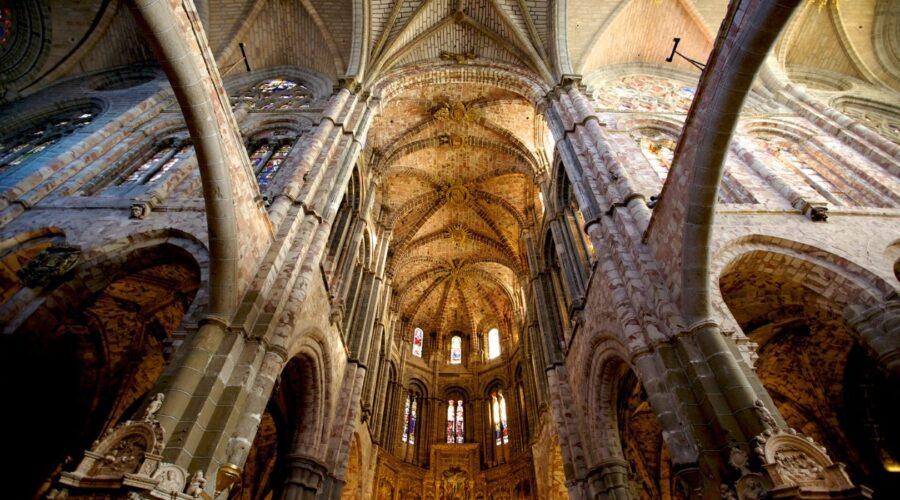
Lord of Life Lutheran Church: A Spiritual Oasis in the Heart of the Community
About Lord of Life Lutheran Church
Lord of Life Lutheran Church is a vibrant and welcoming congregation located in [Your City]. Founded in [Year], the church has played an integral role in the community, offering spiritual guidance, fostering a sense of belonging, and serving the needs of those around.
Affiliated with the Evangelical Lutheran Church in America (ELCA), Lord of Life embraces the principles of love, grace, and service. Their mission is to share the good news of Jesus Christ and to witness to God’s love and presence in the world.
Our Beliefs and Values
At Lord of Life, we believe in:
- The Triune God: Father, Son, and Holy Spirit
- The authority of the Bible as the inspired Word of God
- The salvation of all people through faith in Jesus Christ
- The importance of a life lived in service to others
Our Ministries
We offer a wide range of ministries to meet the spiritual and practical needs of our congregation and community:
Worship Services
- Traditional Worship (Sundays at 8:30 AM)
- Contemporary Worship (Sundays at 10:30 AM)
- Special Services (Holy Days, Seasonal Events)
Education and Formation
- Sunday School (for all ages)
- Confirmation Classes (for youth)
- Bible Studies and Adult Education
Fellowship and Outreach
- Small Groups and Bible Study Groups
- Community Meals and Events
- Service Projects and Mission Trips
Our Staff and Leadership
Our pastoral staff includes:
Name Title Pastor John Smith Senior Pastor Pastor Jane Doe Associate Pastor Pastor Michael Jones Youth Pastor Our church council provides leadership and oversight, working closely with the pastoral staff to ensure the health and vitality of the congregation.
Our Facilities
Lord of Life is located at [Church Address]. Our facilities include:
- A spacious sanctuary for worship services
- Classrooms and meeting rooms for education and fellowship activities
- A kitchen and gathering space for social events
- An outdoor courtyard for recreation and relaxation
How to Get Involved
We welcome everyone to join our church family. Here are some ways to get involved:
- Attend a worship service
- Explore our ministries and find a group that fits your interests
- Volunteer your time and talents
- Join a small group or Bible study
- Contact the church office at [Phone Number] or [Email Address]
Conclusion
Lord of Life Lutheran Church is a thriving Christian community that offers spiritual nourishment, a sense of belonging, and a variety of ministries to serve the needs of our congregation and the surrounding area. Whether you are seeking a church home, exploring your faith, or simply looking for a place to connect with others, we invite you to join us at Lord of Life.